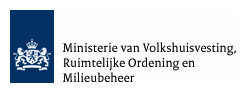High levels of mercury in coastal areas
Women in coastal communities have twice as much mercury in their blood
28.09.2005 |Helen Lynn
Washington Post Staff Writer
Friday, September 23, 2005; Page A03
Women in coastal communities have twice as much mercury in their blood as those living inland, according to an analysis by an Environmental Protection Agency scientist.
The preliminary findings, based on a survey of 3,600 women conducted by the Centers for Disease Control and Prevention between 1999 and 2002, provide fresh evidence of the link between fish consumption and concentrations of methylmercury, a neurotoxin that causes developmental problems in young children.
The study focused on the 10 percent of women with the highest mercury levels, and in that group, it found that inland residents had an average level of 2.4 parts per billion, compared with 5.9 parts per billion for coastal residents. EPA guidelines hold that mercury levels higher than 3.5 parts per billion pose a possible health threat.
Mercury, spewed into the air in emissions from power plants and other sources, ends up in water and accumulates in predator fish such as tuna and swordfish. In pregnant women with high levels, methylmercury crosses the placenta and can affect the developing brain of the fetus.
"What's evident in these data is there's a real difference between the coastal and non-coastal" women, said Kathryn Mahaffey, who conducted the analysis as director of the EPA's division of exposure assessment, coordination and policy. "The message is people need to eat a variety of foods and, when choosing fish species, they need to choose more than one type of fish."
The EPA recommends that women of childbearing age limit their albacore tuna consumption to six ounces, or an average meal, a week. The agency suggests that women eat as much as 12 ounces a week of fish or shellfish that are lower in mercury, such as salmon, shrimp and trout.
Mahaffey said agency scientists did not obtain a detailed diet breakdown from the women, but they assumed that those living in coastal areas ate more fish. A study published this year found that French women living on the coast consume three times as much fish as those living inland.
American women living on the Atlantic Coast had much higher mercury levels than those living on the Pacific or Gulf coasts. Atlantic Coast residents had average levels of 7.7 parts per billion, while women on the Pacific had levels of 4.7 and women on the Gulf Coast had 3.2 parts per billion.
Mahaffey said she could not account for the discrepancy, adding, "Fish are just not all the same."
The study, obtained by The Washington Post from the nonprofit Natural Resources News Service, also indicated that wealthier women were more likely than poor women to have elevated mercury levels. Women earning less than $20,000 annually had an average level of 2.8 parts per billion, while women earning more than $20,000 had 3.9 parts per billion.
Environmentalists said the survey -- along with another this week in the journal Environmental Health Perspectives that showed Asian, Pacific Islander and Native American women have higher mercury levels than women from other backgrounds -- should remind Americans of the health dangers contaminated fish can pose.
"It reaffirms there's a strong connection to ocean fish, but that's not to say non-coastal residents are safe," said Jackie Savitz, who directs the seafood contamination campaign at Oceana, an advocacy group. "Alarms should really be sounded for everyone."
Oceana has lobbied grocery store chains -- including Safeway, Wal-Mart and Whole Foods -- to post signs identifying which fish are high in mercury.


































